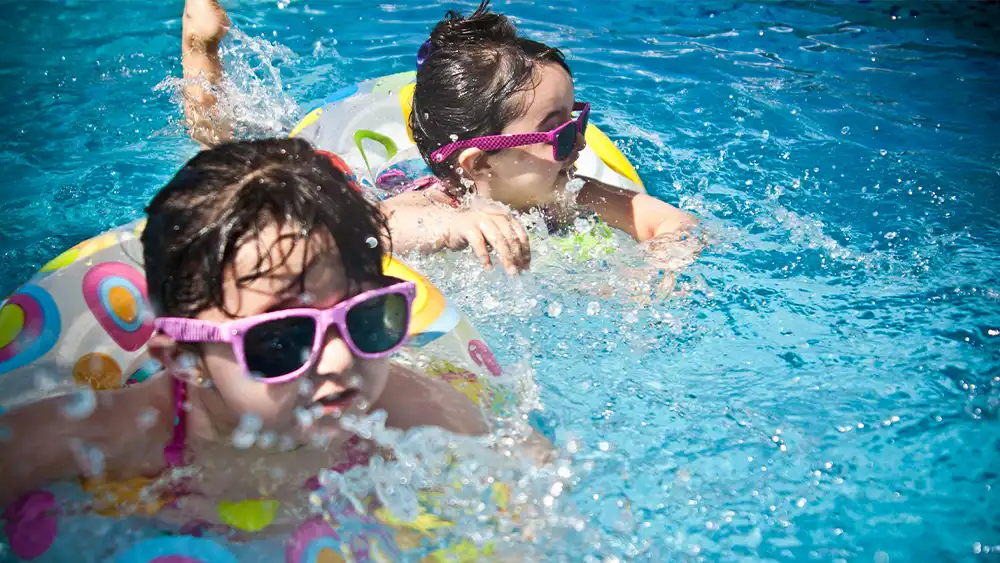The Impact of Swimming on Kids’ Muscle and Bone Health

Swimming is more than just a recreational activity or summer hobby for kids—it can be a powerful tool for their physical development. From an early age, children begin building the foundation for lifelong health, and consistent physical activity plays a major role. Among all the options available, swimming stands out as one of the most effective ways to support muscle strength and bone development in growing bodies. This is due to the unique blend of resistance, coordination, and low-impact motion that swimming offers.
A Full-Body Workout That Builds Strength Naturally
Unlike many land-based sports, swimming engages nearly every major muscle group simultaneously. Each stroke requires coordinated movement from the arms, legs, and core, creating a balanced workout that strengthens the entire body without overloading any single joint. Young swimmers develop lean muscle mass as they move through water, using their own body as resistance. This natural form of training helps muscles grow in proportion and promotes flexibility alongside strength.
What makes swimming especially beneficial is how it builds endurance and strength at the same time. Children who swim regularly don’t just bulk up individual muscles; they improve overall stamina, which supports the growth and maintenance of strong, healthy tissues. The repetitive nature of swim training builds slow-twitch muscle fibers, which are critical for long-term muscle function and metabolic efficiency.
How Swimming Influences Bone Development

Bone strength during childhood is a major predictor of bone health later in life. Activities that place stress on bones, even in low-impact ways, encourage increased bone density as the body adapts to repeated forces. While swimming may not have the impact intensity of running or jumping sports, it still exerts resistance against the skeletal system through water pressure and muscular contractions.
Each time a child kicks, pulls, or twists in the pool, their bones and joints are involved in controlled movement. Over time, this fosters joint stability and helps mineralize bone tissue. A child who swims consistently experiences more mechanical load on their skeleton than someone who leads a sedentary lifestyle, leading to improved bone strength. The added benefit is that swimming protects children from common overuse injuries, as the buoyancy of water cushions growing joints.
Improved Posture and Core Stability
Many children struggle with posture as they grow, especially as they spend more time sitting at school or using electronic devices. Swimming can counteract these habits by reinforcing core strength and body awareness. Proper swim form depends on spinal alignment and midsection stability, encouraging kids to develop muscles around the lower back and abdomen.
Through consistent practice, young swimmers become more conscious of how their bodies move in space. Swimming strengthens muscles that stabilize the spine and pelvis, which are essential for posture and balance. Over time, this leads to a stronger trunk, fewer muscle imbalances, and better posture both in and out of the water. These benefits aren’t just physical—they often result in improved coordination and confidence during daily activities.
Swimming Promotes Long-Term Athletic Development

Starting young in a sport like swimming sets the stage for long-term health benefits. Kids who swim regularly build habits of discipline, movement skill, and self-care that often continue into adulthood. More than that, swimming develops foundational athletic traits that benefit other sports—agility, cardiovascular strength, breath control, and proprioception.
Unlike impact-heavy sports, swimming gives kids the ability to train consistently without the same level of wear and tear. That consistent movement, even at moderate levels, supports not only cardiovascular function but also long-term musculoskeletal health. Many coaches encourage swimming as a base training activity for young athletes, as it promotes recovery and enhances overall fitness levels.
Children who develop strong bones and muscles early are less likely to suffer fractures or joint problems later in life. They tend to maintain better balance and coordination as they age. These long-term advantages make swimming one of the smartest activities parents can encourage for their children.
The Role of Instruction and Environment
Skill development in swimming doesn’t happen overnight. It requires structured practice and knowledgeable instruction. A qualified swimming school provides the environment where children learn not just to stay afloat, but to move with purpose and precision. Early training helps children adopt proper form and breathing techniques, laying the foundation for more efficient movement. If you’re looking to give your child a head start in physical health and fitness, you can find out more about local swimming school programs that specialize in working with young swimmers.
The water-based setting creates a safe space for children who may be nervous or lack confidence in sports. With the right encouragement and guidance, they can develop both physical skills and self-esteem. A well-run program takes a child’s developmental stage into account, adapting instruction to support steady progress. This type of personalized attention can make all the difference in helping a child build lasting strength and coordination.
How Swimming Helps Prevent Childhood Injuries
Injuries are common in many youth sports, especially those that involve repeated impact or abrupt changes in direction. While no physical activity is completely risk-free, swimming significantly reduces the chances of injury when compared to contact sports. Water cushions the body, preventing jarring motions and minimizing the impact on growing joints and bones.
Children who swim develop more symmetrical muscle tone. Many injuries stem from muscular imbalances or overuse of one side of the body. Swimming strokes require equal use of both arms and legs, encouraging more uniform development. This balanced strength distribution can help protect the body from sprains, strains, and chronic stress injuries later in life.
Incorporating swimming into a child’s routine doesn’t just build strength—it builds resilience. The controlled, repetitive nature of swim strokes helps reinforce movement patterns that are both effective and safe. As kids become more competent in the water, their overall risk of injury in and outside of the pool declines.
Conclusion
Swimming is a complete, low-impact activity that promotes full-body strength and healthy bone growth during critical developmental years. When children engage with swimming regularly and in the right environment, they gain physical resilience, mental focus, and confidence that extends beyond the water. Whether your child becomes a competitive swimmer or simply enjoys time in the pool, the benefits to muscle and bone health are significant and long-lasting.

news via inbox
Sign up and never miss out on the latest news and updates at HighStuff




